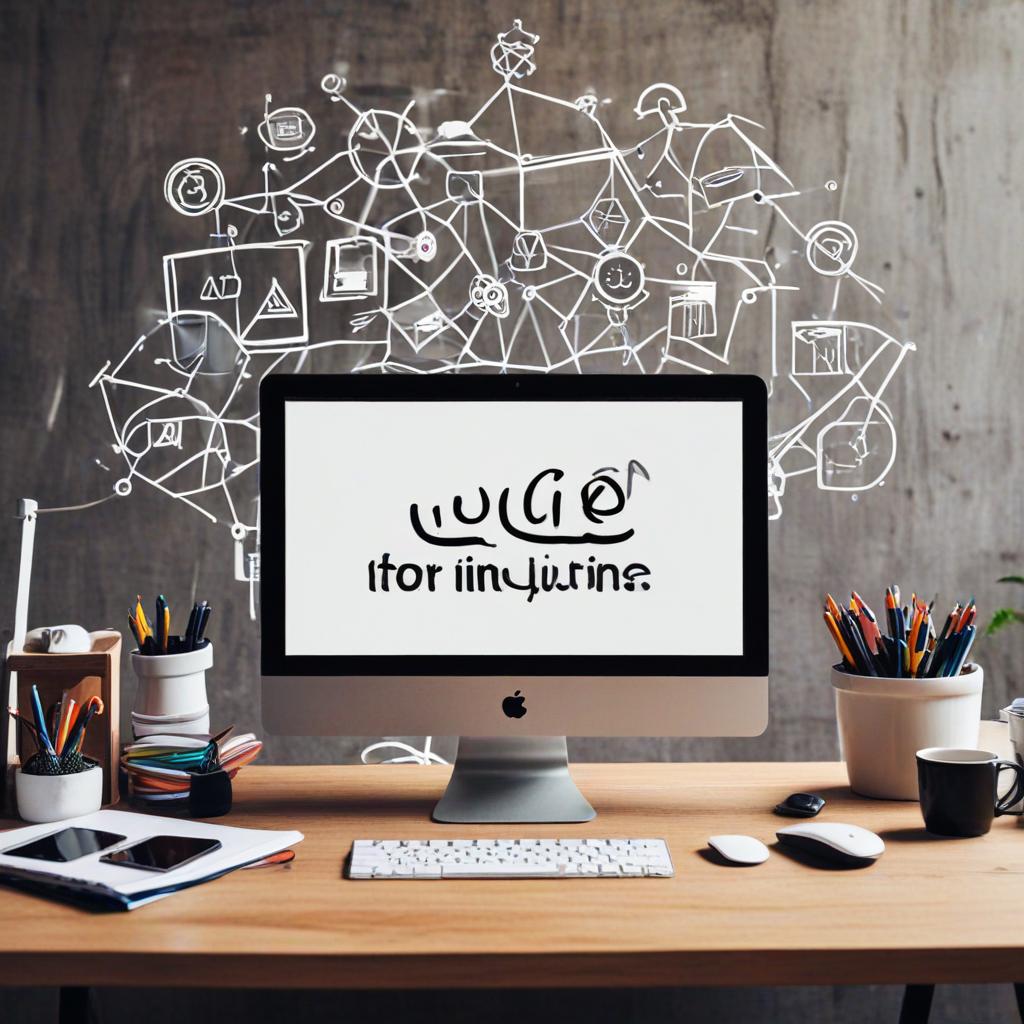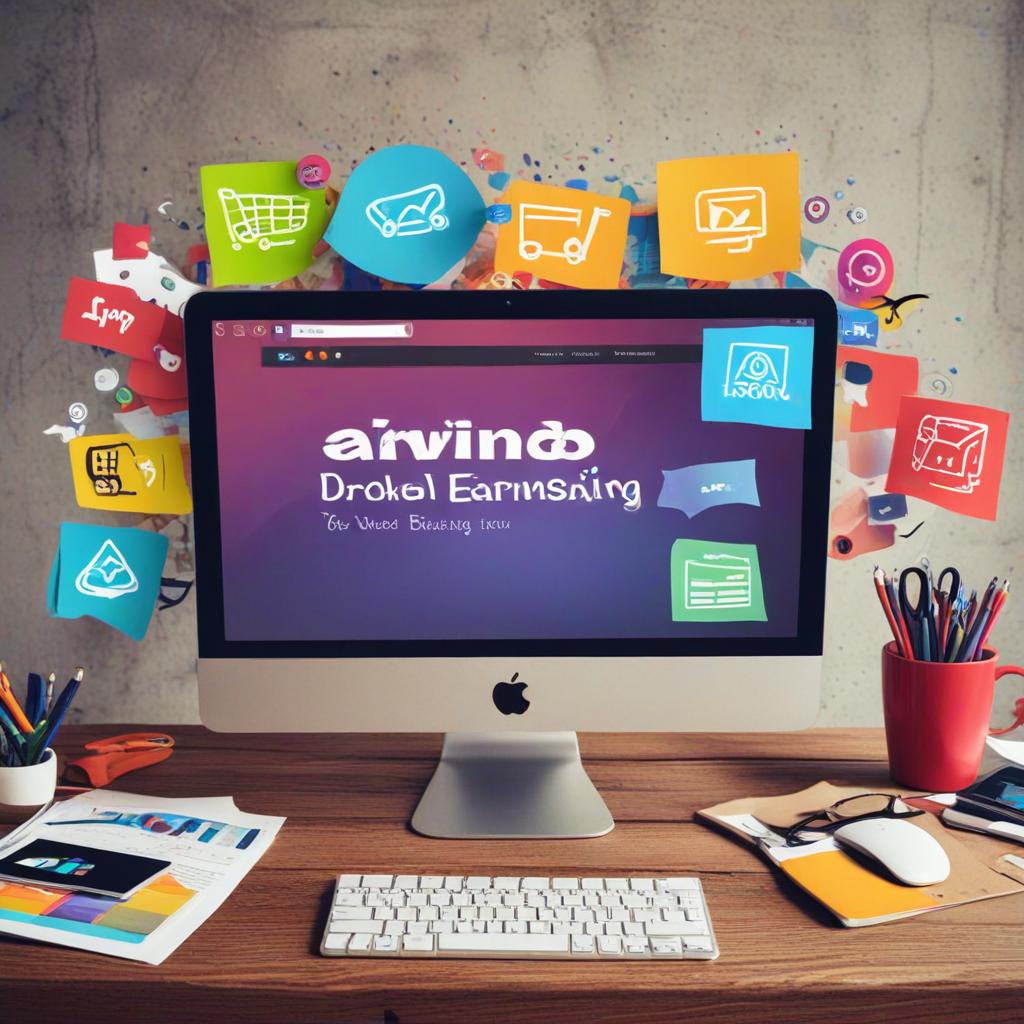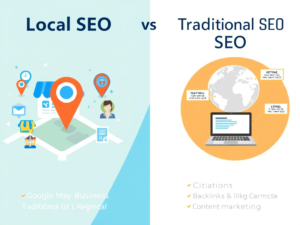Boost Your Online Earnings
Introduction
The world of web design is in constant flux, shaped by rapidly evolving technologies, shifting user preferences, and emerging design trends. Staying ahead of the curve isn’t just about aesthetics; it’s a strategic imperative with a direct impact on your online earnings.
The latest web design trends have the power to transform your online presence from a mere website into a captivating digital experience. By embracing these trends, you can significantly enhance user engagement, build trust, and ultimately drive more conversions. Whether you’re a freelance designer, agency owner, or online business owner, understanding and implementing current web design trends is essential for maximizing your online earnings potential.

Table of Contents
Essential Web Design Trends for 2024 and Beyond
The world of web design is constantly evolving, and staying ahead of the curve is crucial for maximizing your online earnings and attracting a wider audience. As we venture into 2024 and beyond, several exciting trends are set to redefine the way we experience the internet. By incorporating these latest web design trends, you can not only elevate your designs but also enhance user experience and increase your earning potential.
The Rise of Dark Mode
One trend that’s rapidly gaining momentum is the adoption of dark mode. This visually striking aesthetic not only adds a touch of sophistication and modernity to websites but also offers potential benefits for users’ eyesight and device battery life. The reduced glare and high contrast of dark mode can be easier on the eyes, particularly in low-light conditions.
Incorporating a dark mode option into your web designs is becoming increasingly essential to cater to the diverse preferences of users. Many individuals prefer the darker interface for its visual appeal and potential energy-saving benefits. By offering a toggle switch or automatic dark mode detection based on user settings, you demonstrate a commitment to accessibility and user-centric design.

Beyond Aesthetics: The Practical Advantages
Dark mode isn’t just about aesthetics; it can have a tangible impact on online earnings. Websites optimized for dark mode tend to have lower bounce rates and longer user engagement, which can translate to increased conversions and ultimately higher revenue. Additionally, dark mode-friendly designs can enhance the perceived value of your services, positioning you as a forward-thinking designer who understands and caters to user needs.
Embracing dark mode is just one of the many exciting web design trends shaping the digital landscape. By staying informed about these trends and integrating them into your work, you can ensure that your designs remain relevant, engaging, and profitable in the years to come.
Microinteractions: The Subtle Art of Enhancing User Engagement
In the ever-evolving world of web design, staying ahead of the curve is essential for online earnings and attracting a wider audience. One of the latest web design trends that’s making waves is the strategic use of microinteractions. These subtle animations and interactive elements may seem small, but their impact on user engagement and overall experience is significant.
What Are Microinteractions?
Microinteractions are the tiny details that bring a website to life. They’re the hover effects that change a button’s color, the playful animations that accompany scrolling, and the progress indicators that provide feedback during loading times. While seemingly insignificant, these interactions create a more immersive and enjoyable user experience.

Examples of Microinteractions in Action
- Hover Effects: When a user hovers their mouse over a button or link, a subtle animation like a color change or slight movement can provide visual feedback and make the interaction feel more responsive.
- Button Animations: Adding a bounce or ripple effect when a button is clicked can add a touch of personality and delight to the user experience.
- Progress Indicators: During loading times or form submissions, animated progress bars or loaders keep users informed and engaged, preventing them from feeling frustrated or leaving the site.
Why Microinteractions Matter
Microinteractions may seem like minor details, but they play a crucial role in several key areas:
- User Engagement: They make websites more interactive and fun to use, encouraging users to spend more time exploring.
- User Experience: They provide feedback, guide users through processes, and make interactions feel more natural and intuitive.
- Brand Personality: Well-designed microinteractions can reinforce a brand’s identity and create a memorable impression.
Integrating Microinteractions into Your Web Design
If you’re looking to enhance your web design skills and increase your online earnings, incorporating microinteractions is a smart move. Start by identifying areas of your website where these subtle animations can add value.
Remember, the goal is to enhance the user experience, not overwhelm it. Use microinteractions thoughtfully and strategically to create a website that’s both visually appealing and engaging.
3D Graphics and Immersive Experiences
As we delve into the latest web design trends, it’s impossible to ignore the growing prominence of 3D graphics and immersive experiences. These technologies are reshaping how we interact with websites, adding depth, realism, and a touch of magic to the digital landscape. With the rise of virtual and augmented reality (VR/AR), web designers now have powerful tools to create captivating experiences that blur the lines between the physical and digital worlds.
Exploring 3D Visuals and Interactive Elements
Incorporating 3D visuals can elevate your web design to new heights. Imagine showcasing products in a virtual showroom where users can rotate and examine them from every angle, or creating interactive 3D animations that bring your brand story to life. By leveraging 3D graphics, you can capture attention, enhance user engagement, and leave a lasting impression on your audience.
Interactive elements further amplify the immersive experience. Consider adding 360-degree product views, gamified features, or virtual tours that allow users to explore spaces as if they were physically present. These elements not only make your website more enjoyable to navigate but also increase the likelihood of users spending more time on your site and converting into customers.
Staying Ahead of the Curve: Embracing Innovation for Online Earnings
As a web designer, staying abreast of the latest trends is essential for maximizing your online earnings. By embracing 3D graphics and immersive experiences, you position yourself as an innovative professional who can deliver cutting-edge solutions to clients.
Incorporating these technologies into your projects not only sets you apart from the competition but also opens up new avenues for revenue generation. For example, you can specialize in designing VR/AR experiences for businesses, create 3D product visualizations for e-commerce platforms, or develop interactive web applications that leverage the power of 3D graphics.
The possibilities are endless, and the demand for immersive experiences is only set to grow. By embracing this trend, you can future-proof your career and unlock new opportunities for financial success in the ever-evolving world of web design.
Web Design Trends Shaping Online Earnings in 2024 and Beyond
The world of web design is ever-evolving, and staying ahead of the curve is crucial for maximizing your online earnings potential. In 2024, several key trends are shaping the way we design for the digital landscape:
Minimalist Design: Less is More
Minimalism continues to reign supreme as a leading web design trend. Clean, uncluttered layouts with a focus on essential content and functionality create a visually appealing and user-friendly experience. By prioritizing user-friendly navigation and fast loading times, you enhance engagement and reduce bounce rates, ultimately driving more conversions and boosting your online earnings.

Voice User Interface (VUI): The Rise of Voice Search
As voice assistants like Siri and Alexa become more integrated into our daily lives, voice user interface (VUI) is emerging as a significant trend in latest web design. Optimizing your website for voice search and incorporating voice commands can give you a competitive edge, attracting a wider audience and potentially increasing your online earnings through improved visibility and accessibility.
Beyond the Trends: Building a Sustainable Online Presence
While staying current with the latest web design trends is essential, it’s equally important to focus on building a sustainable online presence. This involves creating high-quality content, optimizing for search engines (SEO), and engaging with your audience on social media. By combining a strong foundation with cutting-edge design elements, you can establish a website that not only looks great but also delivers tangible results for your online earnings.
Let me know if you’d like any of these sections further expanded or tailored to your specific needs!
Accessibility: A Core Principle of Modern Web Design
In the ever-evolving landscape of web design trends, one principle remains constant: accessibility. Designing for inclusivity means ensuring that everyone, regardless of ability, can access, navigate, and interact with your website. This not only aligns with ethical considerations but also makes good business sense.
By adhering to established accessibility guidelines, such as the Web Content Accessibility Guidelines (WCAG), you open your website to a wider audience, including people with disabilities. This can significantly increase your reach and potential for online earnings. After all, a larger, more diverse audience translates to more potential customers and clients.
Moreover, prioritizing accessibility often leads to a better user experience for everyone. Features like clear navigation, well-structured content, and alternative text for images not only benefit those with disabilities but also improve usability for all visitors. This can lead to increased engagement, longer visit durations, and higher conversion rates, ultimately impacting your bottom line.
The Latest Web Design Trends Embrace Accessibility
In recent years, accessibility has become a central focus in the latest web design practices. Designers are increasingly incorporating features like keyboard navigation, screen reader compatibility, and color contrast adjustments. This shift towards inclusive design is not just a trend; it’s a fundamental shift in how we approach web development.
By prioritizing accessibility in your web design projects, you not only contribute to a more inclusive online environment but also future-proof your work. As awareness of accessibility continues to grow, websites that adhere to these principles will be better positioned to thrive in the digital landscape.
So, as you explore the latest web design trends, remember that accessibility is not just a checkbox to tick; it’s an integral part of creating a user-centered, impactful online presence.
Scrollytelling: The Art of Narrative Web Design
In the ever-evolving landscape of web design trends, one technique that’s capturing attention and boosting user engagement is scrollytelling. This innovative approach combines the power of storytelling with interactive scrolling animations to guide users through content in a captivating way. As visitors scroll down a webpage, elements like text, images, videos, and animations come to life, creating an immersive and memorable experience.
Scrollytelling is particularly effective for showcasing creative projects or presenting long-form content that might otherwise feel overwhelming. By breaking down information into bite-sized chunks and revealing them progressively as users scroll, designers can maintain audience interest and encourage deeper exploration.
Why Scrollytelling Matters for Online Earnings
Beyond its aesthetic appeal, scrollytelling can significantly impact your online earnings as a web designer. Websites that utilize this technique tend to have lower bounce rates and higher user engagement. Visitors are more likely to stay on a page longer, explore its content thoroughly, and ultimately take desired actions, such as making a purchase or contacting you for services.
Incorporating scrollytelling into your web design projects showcases your ability to stay ahead of the curve and create cutting-edge experiences. This can attract higher-paying clients who value innovation and understand the impact of engaging design on their online earnings.
Bringing Scrollytelling to Life
There are countless ways to leverage scrollytelling in your web designs. You can use parallax scrolling to create stunning visual effects, trigger animations to reveal key information, or even embed interactive elements like quizzes or surveys that respond to user scrolling.
When implementing scrollytelling, remember to prioritize user experience. Ensure that the animations are smooth and intuitive, the content is well-structured, and the overall design is visually appealing. By striking the right balance between creativity and functionality, you can create scrollytelling experiences that leave a lasting impression and drive tangible results for your clients and your own online earnings.
Let me know if you’d like a deeper dive into specific scrollytelling techniques or examples!
How Latest Web Design Trends Impact Online Earnings
Improved User Experience (UX) through Modern Web Design Trends
In the fast-paced world of the internet, user expectations are constantly evolving. Implementing the latest web design trends isn’t just about aesthetics; it’s a strategic move to enhance the user experience (UX) on your website. By embracing modern design elements, you can make your site more intuitive, engaging, and ultimately more profitable.
A positive UX can lead to increased user engagement, longer visit durations, and higher conversion rates, directly impacting your online earnings. When visitors find your website easy to navigate, visually appealing, and responsive across devices, they are more likely to stay longer, explore your content, and take desired actions, whether it’s making a purchase, signing up for a newsletter, or contacting you for services.
Modern web design trends like minimalist layouts, clear typography, intuitive navigation, and fast loading times all contribute to a seamless user experience. By staying abreast of these trends and incorporating them thoughtfully into your website, you demonstrate a commitment to providing value to your visitors.
Here are a few specific ways in which modern design trends can improve UX and boost your online earnings:
- Mobile-first Design: With the majority of internet users accessing websites on mobile devices, a mobile-first approach ensures a smooth experience across all screen sizes, leading to higher engagement and conversions.
- Interactive Elements: Incorporating interactive elements like animations, microinteractions, and parallax scrolling can add a layer of engagement and delight, keeping users interested and encouraging them to explore further.
- Personalization: Tailoring the user experience based on individual preferences and behaviors can create a sense of connection and increase the likelihood of conversions.
- Accessibility: Designing for accessibility ensures that your website is usable by everyone, including people with disabilities, which not only expands your potential audience but also demonstrates your commitment to inclusivity.
By prioritizing user experience and embracing modern web design trends, you can create a website that not only looks great but also delivers real results for your online business.
Attracting and Retaining Clients: The Power of a Modern Online Presence
In the fast-paced world of web design, where web design trends are constantly evolving and online earnings are directly tied to your digital prowess, a visually appealing and up-to-date website isn’t just an asset – it’s a necessity. Your website serves as a virtual storefront, showcasing your skills and expertise to potential clients. By incorporating the latest web design techniques, you demonstrate a commitment to staying ahead of the curve and delivering cutting-edge solutions.
A visually stunning website makes a powerful first impression, capturing the attention of visitors and encouraging them to explore further. It communicates your professionalism, attention to detail, and ability to create engaging user experiences. A well-designed website not only attracts new clients but also helps retain existing ones by reinforcing your credibility and instilling confidence in your abilities.
Staying abreast of the latest web design trends is essential for remaining competitive in the online marketplace. By incorporating modern design elements, responsive layouts, and intuitive navigation, you create a user-friendly experience that keeps visitors engaged and encourages them to take action. Whether it’s showcasing your portfolio, highlighting your services, or providing a seamless contact form, a modern website facilitates meaningful interactions with potential clients.
By continuously updating your website with fresh content, recent projects, and relevant industry insights, you demonstrate your dedication to your craft and your passion for staying current with evolving trends. This commitment to excellence not only attracts new clients but also fosters long-lasting relationships with existing ones, ultimately driving your online earnings and contributing to your success in the competitive web design landscape.
Increased Visibility Through Modern Web Design
Staying abreast of the latest web design trends isn’t just about aesthetics; it’s a strategic move that can significantly impact your online earnings. By incorporating cutting-edge design elements, intuitive user experiences, and the latest technologies, you create a website that not only captivates visitors but also appeals to search engines.
Search engines like Google prioritize websites that offer a seamless user experience, fast loading times, and mobile responsiveness. When your site aligns with these factors and follows current web design trends, it signals to search engines that your content is relevant, fresh, and valuable to users. As a result, your website is more likely to rank higher in search engine results pages (SERPs).
Higher SERP rankings translate to increased organic traffic—visitors who find your website through natural searches rather than paid advertising. This organic traffic is incredibly valuable as it consists of users actively seeking the services you offer. By capturing their attention with a modern, trend-conscious website, you increase the likelihood of converting them into paying clients, ultimately boosting your online earnings.
Staying Ahead of the Curve
The web design landscape is constantly evolving, so continuous learning and adaptation are key to maintaining a competitive edge. Regularly researching web design trends and implementing them thoughtfully can lead to sustained growth in your online presence and client acquisition.
Higher Conversion Rates: A Design-Driven Approach
User experience lies at the heart of conversion rate optimization. A website that’s intuitive to navigate, visually appealing, and optimized for various devices can significantly impact how users interact with your content and offerings. By strategically placing calls to action, streamlining the checkout process, and minimizing distractions, you create a user journey that naturally leads to conversions.
Consider incorporating elements like clear product descriptions, compelling visuals, persuasive testimonials, and trust badges to build credibility and encourage users to take action. A/B testing different design elements and layouts can also provide valuable insights into what resonates most with your audience, allowing you to further refine your approach.
Remember, a well-designed website isn’t just about following the latest trends; it’s about creating an experience that aligns with your brand, caters to your target audience, and ultimately drives revenue growth. By prioritizing user experience, optimizing the sales funnel, and leveraging the power of persuasive design, you can unlock the full potential of your online presence and achieve higher conversion rates that translate into tangible results.
Tips for Incorporating Web Design Trends into Your Projects
Staying ahead in the dynamic world of web design requires a keen eye on the latest trends and a willingness to adapt. By weaving emerging design elements into your projects, you can create captivating online experiences that resonate with users and drive results. Whether you’re aiming to enhance user engagement, boost conversions, or simply maintain a fresh, modern aesthetic, these tips will guide you in effectively incorporating the latest web design trends:
- Stay Informed: The web design landscape is constantly evolving. To stay at the forefront, follow influential design blogs, subscribe to industry newsletters, attend webinars, and actively participate in online communities dedicated to web design. These platforms offer valuable insights into emerging web design trends, expert opinions, and discussions on how to leverage these trends to maximize online earnings.
- Experiment and Innovate: Don’t shy away from experimenting with new techniques, layouts, and interactive elements. Web design is a creative field, and innovation often stems from pushing boundaries. Incorporate cutting-edge features like micro-interactions, immersive scrolling experiences, or dynamic animations to give your designs a unique edge.
- Prioritize User Experience (UX): While embracing trends is important, never compromise on user experience. Trends should enhance, not hinder, how users interact with your website. Conduct thorough user testing to gather feedback on how design elements impact their experience. This will help you ensure that your trendy designs are also user-friendly and intuitive.
- Continuous Improvement: The digital world never stands still. Regularly review and update your website to incorporate new web design trends as they emerge. This will help you maintain a modern, relevant look that keeps users engaged and coming back for more.
By following these tips, you can confidently incorporate the latest web design trends into your projects, creating visually stunning and highly functional websites that meet the ever-evolving expectations of online users. Remember, staying informed, experimenting, prioritizing user experience, and continuously improving are the keys to success in the dynamic world of web design.
Conclusion
In the dynamic world of web design, change is the only constant. Web design trends are continuously evolving, driven by technological advancements, shifting user preferences, and emerging design philosophies. To thrive in this fast-paced environment and maximize your online earnings, embracing change is not just an option—it’s a necessity.
Staying ahead of the curve requires a proactive approach. Invest in your skills by regularly exploring the latest web design techniques, tools, and platforms. Experiment with new design approaches, attend workshops or conferences, and engage with online communities to stay informed about emerging trends.
By continuously learning and adapting, you’ll be well-equipped to leverage the latest trends effectively. This not only enhances your creative capabilities but also makes you a more valuable asset to clients seeking cutting-edge web solutions. As a result, you’ll be able to command higher rates and expand your client base, ultimately boosting your online earnings.
The Future of Web Design: Your Opportunity Awaits
The future of web design is filled with exciting possibilities. New technologies like artificial intelligence, virtual reality, and augmented reality are poised to revolutionize how we interact with websites and digital experiences. By staying ahead of the curve and embracing these emerging trends, you can position yourself as a pioneer in the field, attracting a wider audience and unlocking new revenue streams.
Remember, the web design industry rewards those who are adaptable, innovative, and passionate about their craft. Embrace change, invest in your skills, and continuously explore new frontiers. By doing so, you’ll not only stay competitive but also pave the way for a successful and fulfilling career in the ever-evolving world of web design.
Frequently Asked Questions (FAQs)
What should I include in my web design portfolio?
Your portfolio should showcase your best and most relevant work. Include a variety of projects that demonstrate your skills and expertise in different areas of web design. Highlight your process, design choices, and the results you achieved for clients.
How many projects should I include in my portfolio?
There’s no magic number, but aim for quality over quantity. Focus on showcasing your strongest projects, even if that means including only a few. A smaller, well-curated portfolio is better than a large one filled with mediocre work.
Which platform should I use to create my online portfolio?
Many platforms cater to web designers, each with unique features and pricing plans. Some popular options include:
WordPress: Highly customizable, but requires more technical knowledge.
Squarespace: User-friendly with beautiful templates, ideal for beginners.
Wix: Offers drag-and-drop functionality and a wide range of templates.
Behance: A popular platform for showcasing creative work, but less customizable.
How often should I update my portfolio?
Update your portfolio regularly with new projects, testimonials, and any additional skills you acquire. Aim to refresh it at least once a year, or more frequently if you have new work to share.
How do I attract clients with my portfolio?
Share your portfolio across your online platforms, include it in your proposals, and actively promote it to potential clients. Optimize your portfolio for search engines by using relevant keywords and descriptions. Consider showcasing your portfolio in online communities and forums where potential clients may be looking for web designers.
Can I include client work under NDA in my portfolio?
If you have client work under a non-disclosure agreement (NDA), it’s generally best to respect that agreement and not include it in your portfolio. However, you can often still showcase the project by omitting sensitive information or creating a mock-up version of the design.
Should I include personal projects in my portfolio?
Yes! Personal projects are a great way to demonstrate your creativity and passion for web design. They can also showcase your ability to take initiative and work independently.





